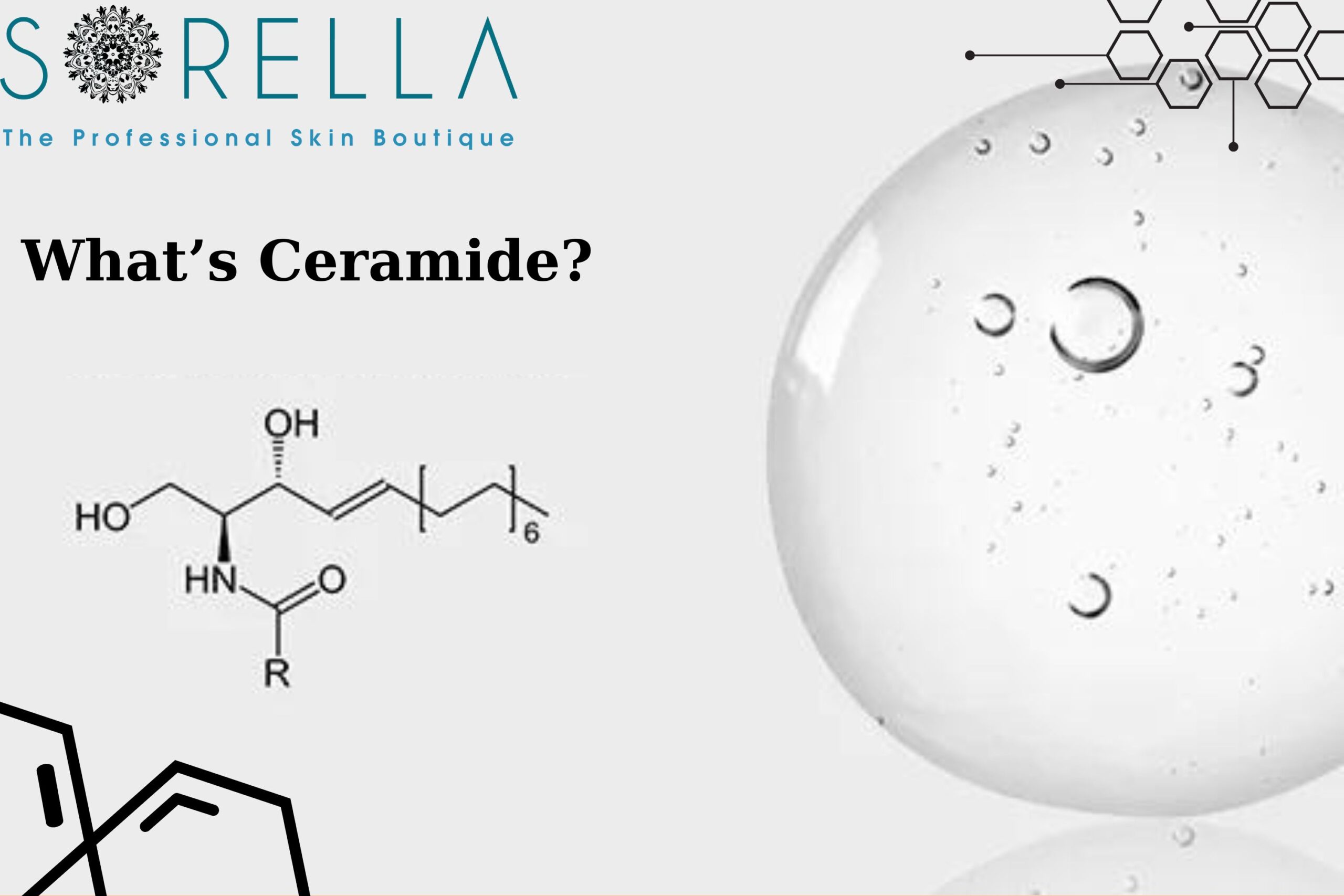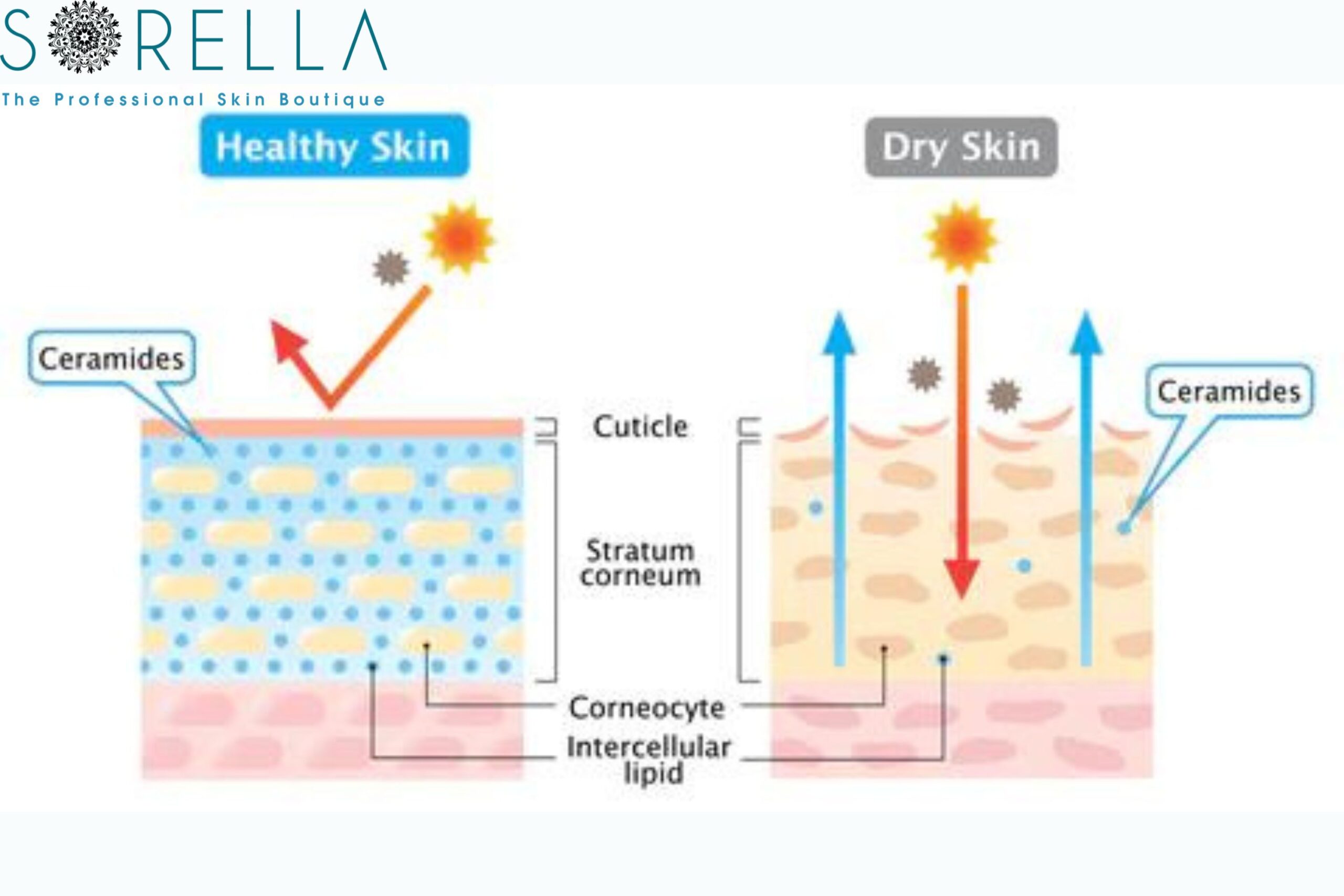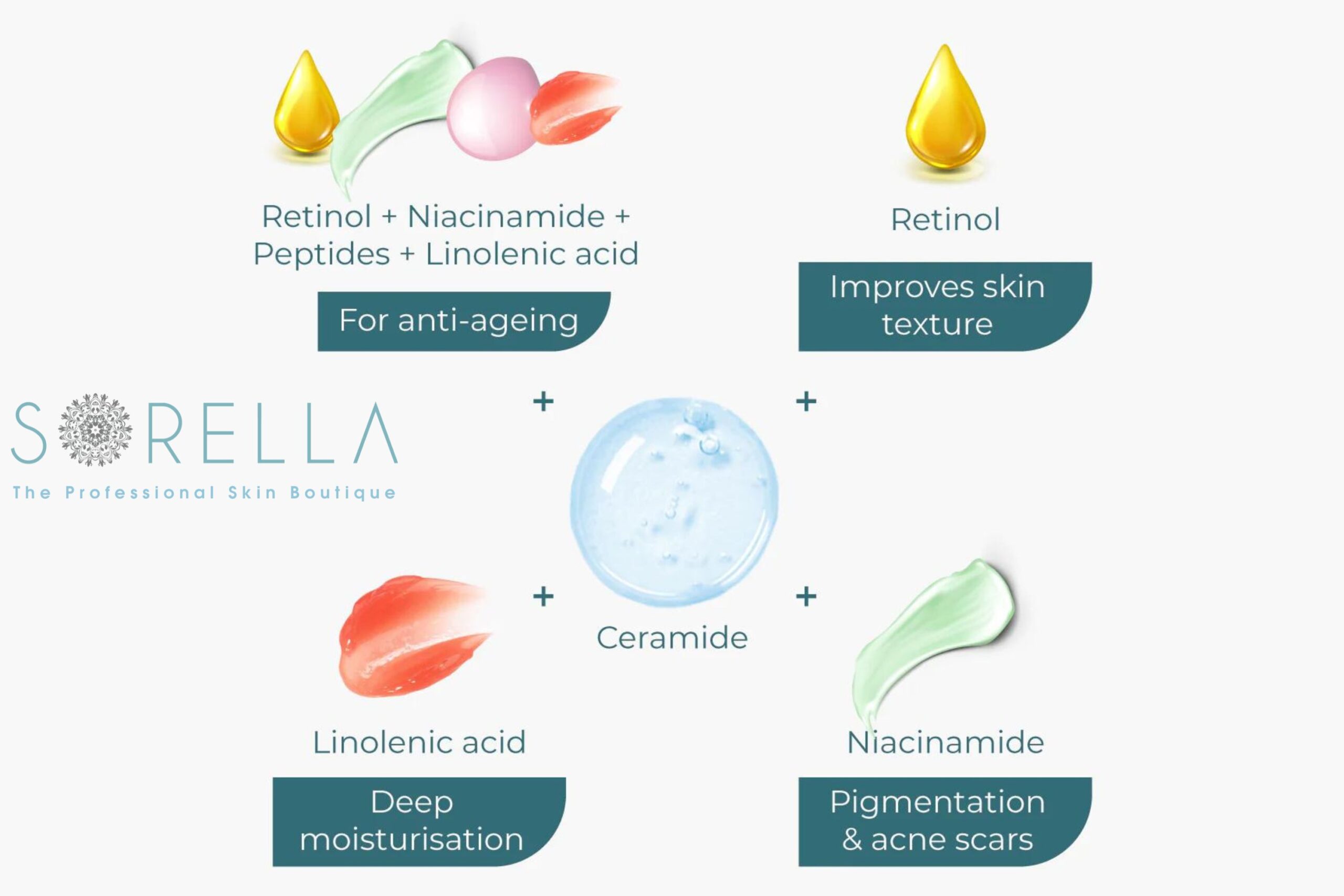Bí quyết làm đẹp
The importance of ceramide and 4 questions about it
When people looking for moisturizers, they often find the popular and most recommended brand or just grab some random product with those written moisturizers on it. However, to receive the best result, you should do some research about the moisturizer’s ingredients. Today, Sorella will provide you with some information about one of the most important components of moisturizers in this article: “The importance of ceramide and 4 questions about it”.
What is ceramide?
Ceramides, those essential lipids found in skin cells, are like the superheroes of your skin’s protective barrier. They can be found naturally in your skin, as well as in animals like cows and plants like soy. These amazing molecules not only keep your skin hydrated but can also be applied topically to give your skin a moisture boost and repair any dry, cracked areas.
From moisturizers to cleansers to serums, ceramides are the versatile skincare ingredient your skin craves. Making up a significant portion of the outermost layer of your skin, these ceramides are the secret to achieving that healthy, resilient glow.

The importance of ceramide
When you get older, your skin’s ceramide content decreases, and it can become dehydrated; as ceramides are important for retaining the skin’s moisture and preventing germs into your skin. If this issue does not get any treatment, it will make your skin develop some skin problems like irritation or dryness.
Ceramides can be harmed naturally and by external factors, which are exfoliating, hot showers, abrasive scrubbing, and harsh weather like cold, and dry; as experts say.
Ceramides play a role in your skin’s barrier function, which serves as your body’s first line of defense against external pollution and toxins. They also promote brain development and maintain cell function.
Ceramides not only retain the skin moisture, but they also play as a barrier to the skin. They serve as your body’s first line of defense against external harm like pollution and toxins.
Ceramides can promote brain development and maintain cell function. The brain is known to be rich in sphingolipids, making it sensitive to changes in sphingolipid content. Ceramide, as the key precursor of all sphingolipids, serves as the central component of intracellular stress responses.
As the ceramides decrease with age, one of the many ways to keep your skin healthy is by improving its ceramide levels through skincare products like ceramide moisturizers, creams, serums, and toners.
For these reasons above, re-up your ceramide levels and reinforcing the skin barrier with skin care products are suggestive of preventing dry, flaky, cracked, and itchy skin.
What ceramides do?
What ceramides do? Now that we understand the importance of Ceramide, we will now look more into the 5 benefits of it.
Lock-in moisture: By strengthening the skin barrier, Ceramide can help retain moisture and prevent dehydration in the skin. At the same time, retaining moisture can also prevent and reduce skin dryness or peeling.
Ceramide acts as a skin barrier, and can effectively protect the skin against potentially harmful things from the external environment.
Combatting the visible signs of skin aging involves addressing the gradual breakdown or depletion of the collagen and elastin proteins within the dermis, leading to thinning and accelerated aging. By replenishing the skin’s natural protective barrier at the epidermis with the inclusion of Ceramide, you can bolster its defenses against premature aging, resulting in a rejuvenated complexion that is not only smoother and more supple but also radiates vitality from within.

Addressing inflammatory skin conditions involves restoring the skin’s natural balance and hydration levels. When the outermost layer of the skin, the stratum corneum, is compromised, it can result in dehydration and increased transepidermal water loss (TEWL). This can leave the skin feeling dry and taut, making it more susceptible to inflammatory skin issues like rosacea, eczema, acne, or psoriasis. By nurturing and strengthening the skin barrier, you can help prevent these conditions and promote healthier, more resilient skin.
Achieve velvety-smooth skin: When the skin’s protective barrier is compromised, it can manifest as peeling, persistent dryness, and the emergence of wrinkles caused by dehydration. Introducing Ceramide as a supplement can replenish the lost lipids in the skin, effectively boosting moisture levels and nourishing the skin from within. This transformative process not only restores hydration but also leaves the skin feeling luxuriously soft and rejuvenated.
Ceramide types
Synthetic ceramides, also referred to as pseudo ceramides, are artificially created compounds that have gained popularity in the skincare industry due to their purity and stability compared to natural ceramides. These man-made ceramides are commonly utilized in various skincare products for their reliable performance.
Ceramides, which are essential components of the skin’s natural barrier, are composed of a unique substance known as sphingosine. Sphingosine is a complex chain of carbon atoms with an amino acid attached to it, forming the backbone of ceramides. This versatile molecule exists in different forms that can bind with various fatty acids to create the diverse range of ceramides found in the skin.
In essence, the utilization of synthetic ceramides in skincare formulations not only ensures purity and stability but also allows for the creation of innovative products that effectively support the skin’s barrier function and overall health.
Ceramides are a family of lipids, with more than 1,200 different molecular species identified. However, there are only six major types that can be found in human skin, essential for maintaining a healthy skin barrier. And when scanning the labels of your skincare products, you may come across these commonly listed ceramides:
Ceramide 1, also called ceramide EOS
Ceramide 2, also called ceramide NS or NG
Ceramide 3, also called ceramide NP
Ceramide 6-II, also called ceramide AP
Ceramide 9, also called ceramide EOP
Ceramide 7, also called ceramide OH
There is currently no data to indicate that the skin’s naturally produced Ceramide levels are associated with the potential risk of developing certain skin problems. However, studies from dermatologists show that people with skin diseases such as eczema or psoriasis have less Ceramide on their skin.
Ideal skin types to use ceramide
Embrace Ceramide as a powerhouse ingredient in skincare, as it naturally complements the skin’s composition. This versatile component is a universal favorite, suitable for all skin types – be it oily, dry, combination, normal, or acne-prone. Even those with sensitive skin can benefit from its goodness. Ceramide’s gentle nature extends to delicate areas like the eyes, provided the product is free from irritants like fragrances. So, pamper your skin with Ceramide for a nourishing and harmonious skincare experience.
4 common questions about Ceramide
How to Add Ceramides to Your Skin-Care Routine?
Because ceramides are safe to use, there’s no limit to how often you should or shouldn’t use them.
As ceramides are safe to use, there’s no limit to how often you should or shouldn’t use them. However, it works best for your skin if you apply moisturizer cream that contains Ceramide after taking a shower, as the at that time is still damp for maximum moisturizing benefits, which will help the moisturizer to lock the hydration.

Does ceramide have side effects?
There are no known side effects of topical or oral ceramides. However, some people may be more sensitive to certain skin-care products than others. For example, some ingredients cause a flare of allergic contact dermatitis.
Theoretically, Ceramides have no side effects, so it pretty safe to use. However, some people whose skin is more sensitive or are allergic to some kind of chemical that is in the ceramide-containing product.
Try a patch test on your skin to test whether you are allergic to topical ceramides. Dermatologists consider patch tests the “gold standard” of testing for allergic contact dermatitis.
If you are not sure about allergic things, you can try a patch test on your skin to check whether you are allergic to any ingredients in the product or the Ceramide itself. Or you can contact and consult your dermatologist to know if you need to avoid any products or chemicals that are used in skincare.
Take note of the following steps to conduct a patch test at home:
- Apply a quarter-sized amount of topical ceramides to the skin twice daily for at least one week.
- Do not immediately wash off the product. Instead, leave the product on your skin for as long as you use similar products.
- After one week, see whether you have any reaction, including red, itchy, or swollen skin.
- If so, wash off the product right away and stop using it. You may need a cool compress or petroleum jelly to alleviate allergic contact dermatitis symptoms.
- Consult a dermatologist right away if you have severe symptoms.
Can you use the product during pregnancy?
Ceramides. You can safely include products with ceramides in your pregnancy skincare regime to help combat the signs of aging and thinning skin. Similar to hyaluronic acid, ceramides are naturally produced by the body and help maintain hydration.
Can ceramide mix with other products?

The benefits of ceramides are at their best when combined with products featuring niacinamide, acid exfoliants, and/or retinol. Because ceramides are categorized as a “skin-identical ingredient,” they are also highly compatible with a variety of similarly natural ingredients.
Tư vấn chuyên môn bài viết:
TS.BÁC SĨ NGUYỄN HỮU QUANG
Top 10 Spas in Vietnam to Refresh Your Soul
Acne: 13 Home Treatments for Pimples to Help You Get Rid of Acne
Experts predict 6 skincare trends to watch for in 2023
The Finest Nail Trends 2023? Find out what to anticipate this year in the world of nail art!
A Step-by-Step Guide to Eyelash Extensions 2023
- Top 10 cách khử thâm môi hiệu quả tại nhà mà không phải ai cũng biết
- 5 NGUYÊN TẮC VÀNG BẢO VỆ DA TRÁNH BẮT NẮNG KHI ĐI BIỂN
- What is Nostril Reduction: The “Golden Ratio” Cosmetic Method for Facial Aesthetics and Key Pre-Treatment Considerations
- Khuôn mặt dài và 5 điều bạn cần biết nếu bạn đang sở hữu khuôn mặt này
- Hoại tử da vú sau phẫu thuật đoạn nhũ tiết kiệm da, 1 vài phương pháp điều trị và chăm sóc
Bài viết cùng chủ đề:
-
Nên lựa chọn Rejuran hay Karisma?
-
So sánh Karisma và Profhilo – 2 phương pháp trẻ hóa da tầng sâu đỉnh cao
-
Cách diệt chấy rận hiệu quả ngay tại nhà, 8 phương pháp tiêu diệt chấy rận hiệu quả
-
Có nên dùng khăn ướt để tẩy trang? Cẩn thận khi dùng khăn giấy ướt giúp chăm sóc làn da của bạn, 1 vài thành phần của giáy ướt có hại cho da


 中文 (中国)
中文 (中国) 한국어
한국어 English
English





